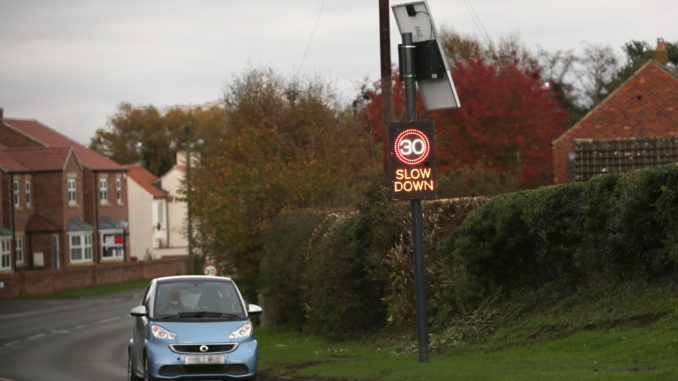
Engineers behind decisions over the introduction of 20mph speed limits across North Yorkshire have been told to factor in people’s feelings rather than just using selected statistics.
Councillors who helped shape North Yorkshire County Council’s new 20mph zone policy said numerous communities and schools which had spent years trying to get consent for the low speed limit had recently been left frustrated again, due to highways officers sticking to a fixed and often unachievable set of criteria.
The authority’s transport, economy and environment scrutiny committee heard a key recommendation of its inquiry into whether a blanket 20mph zone should be launched in all built up areas of the county was that residents’ perceptions should be prioritised in decision-making.
Councillors said despite the apparent change in policy designed to enable more communities to feel safe, the council’s criteria for achieving a 20mph zone appeared to have remained “quite stringent”.
Ainsty division councillor Andy Paraskos told the committee a speed survey in a small, linear village in his area had revealed it had a clear speeding issue, but highways officers had concluded £100,000 of works would be needed just for the village to meet the criteria for having a 20mph speed limit.
Councillor Paraskos said while there was no way a small village could raise £100,000 it would also struggle to meet the criteria as the road was too narrow to include a cycle lane and there were too few verges for a roadside route.
Councillors were told value for money and accident statistics were two criteria highways engineers considered, but Harrogate Bilton and Nidd Gorge division member Paul Haslam said figures such as deaths from vehicle emissions and the social return for a community could also be examined.
The committee’s chairman Councillor Stanley Lumley told officers: “There has to be a technical element to this with regard to data collection, but we strongly recommended to the executive this shouldn’t just be about numbers.
“It should be about local perception and local need. That part of the recommendation is the bit that’s failing in my experience since that report went back. This committee felt local need should have more weight than just statistical evidence.”
Senior officers said while it residents’ feelings would in future be given further consideration the authority would need to continue to use Department of Transport guidance when setting speed limits.
They added combining statistics with subjective factors was difficult, but that the authority had been receiving money from the government’s Safer Roads Fund for a few years to tackle areas with perceived rather than actual road safety issues.
An officer told the meeting: “We are guilty in the past of looking more at that statistical side of things, there’s a need for that, but the mindset is changing, certainly over the last 12 months.”


Be the first to comment